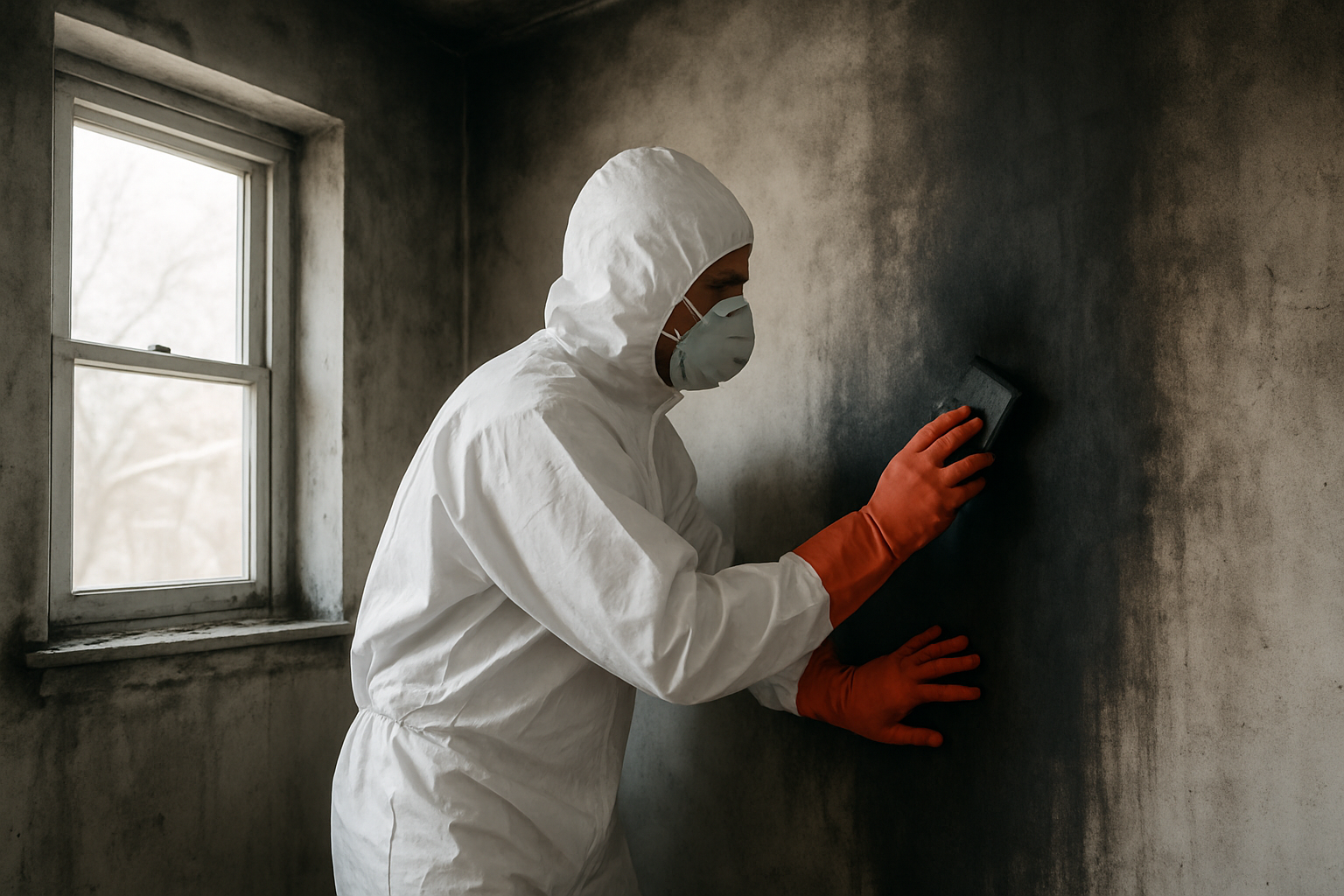The Hidden Dangers of Smoke Residue After a Fire

The Hidden Dangers of Smoke Residue After a Fire (and Why Professional Cleaning Matters)
Meta Title:The Hidden Dangers of Smoke Residue After a Fire
Meta Description:Learn the hidden dangers of smoke residue after a fire and why professional cleaning is essential for safety, health, and property restoration.
URL Slug:the-hidden-dangers-of-smoke-residue-after-a-fire
Introduction
When a fire occurs, the immediate destruction is often obvious—charred walls, burned belongings, and structural damage. What’s less visible, but equally dangerous, is thesmoke residue left behind after a fire. These microscopic particles settle into walls, furniture, HVAC systems, and personal items, creating long-term health and property risks. Understanding the hidden dangers of smoke residue and the importance of professional cleaning is crucial to fully restoring safety and comfort in your home or business.
TLDR – Quick Guide
- Smoke residue contains toxic chemicals and carcinogens that linger long after flames are extinguished.
- Microscopic particles infiltrate walls, ceilings, and air ducts, making DIY cleaning ineffective.
- Residue can corrode metals, stain surfaces, and permanently damage electronics.
- Lingering odors affect indoor air quality and mental well-being.
- Professional cleaning ensures safety, thorough decontamination, and full property restoration.
The Science Behind Smoke Residue
Smoke residue, also calledsoot, forms when materials do not fully combust during a fire. Plastics, fabrics, wood, and household chemicals all release harmful compounds that attach to tiny particles. These particles then spread through the air, settling in areas far beyond the immediate fire zone.
Residue is often invisible to the eye but highly destructive, binding to porous materials and spreading odors and toxins. Left untreated, it can lead tochronic health problemsandstructural decay.
How Smoke Residue Affects Health
- Respiratory Issues:Microscopic soot particles penetrate deep into the lungs, aggravating asthma, bronchitis, and other respiratory conditions.
- Toxins and Carcinogens:Many residues contain harmful chemicals such as formaldehyde and benzene, which are linked to cancer and long-term illnesses.
- Skin and Eye Irritation:Direct contact can cause rashes, burning sensations, and chronic eye irritation.
Children, seniors, and individuals with pre-existing health conditions are especially vulnerable to these dangers.
Property Damage from Smoke Residue
- Staining and Discoloration:Walls, ceilings, and fabrics quickly absorb soot, leading to stubborn stains.
- Corrosion:Residue is acidic, meaning it can corrode metals, appliances, and electronics.
- Odor Penetration:Smoke odors cling to porous surfaces like upholstery, carpets, and drywall, often becoming permanent without professional treatment.
If left untreated, smoke residue can silently reduce property value and compromise long-term safety.
Why Professional Cleaning Matters
Professional fire damage restoration teams use advanced tools and techniques that go far beyond ordinary cleaning supplies. SpecializedHEPA vacuums, chemical sponges, ozone treatments, and thermal foggingare often required to fully neutralize smoke residue and odors.
Professionals also inspect hidden areas like HVAC ducts, crawl spaces, and behind walls—places where residue often lingers undetected. By addressing both visible and hidden contamination, experts not only restore appearance but alsoeliminate health risks and prevent long-term damage.
Key Takeaways
- Smoke residue after a fire is toxic, corrosive, and invisible in many cases.
- Health risks include respiratory illness, cancer-causing exposure, and irritation.
- Property damage extends beyond stains to include corrosion and structural harm.
- DIY cleaning methods are rarely effective against microscopic contamination.
- Professional restoration ensures safety, cleanliness, and peace of mind.
FAQs
- What exactly is smoke residue after a fire?
Smoke residue is a mix of tiny soot particles and chemicals produced when materials burn incompletely. These particles can travel throughout your property, settling on surfaces and inside air ducts. Because they are microscopic, they often go unnoticed but continue causing damage long after the fire is out. - Can I clean smoke residue myself?
DIY cleaning methods often spread soot further rather than remove it completely. Household cleaners are not designed to neutralize the toxic chemicals found in smoke residue. Professional cleaning ensures deep decontamination with specialized tools and products. - How soon should smoke residue be removed after a fire?
The sooner, the better—smoke residue begins damaging surfaces within hours. Metals start corroding quickly, and porous materials absorb soot deeply if left untreated. Immediate professional intervention minimizes both health risks and permanent property damage. - Why does smoke residue cause odors that linger?
Soot particles are incredibly small and embed themselves into fabrics, carpets, and drywall. These particles continually release odors over time, making the smell of smoke persist indefinitely. Specialized deodorization techniques are needed to fully remove these odors. - Is professional cleaning worth the cost?
Yes, because it protects both your health and your property’s long-term value. Without professional cleaning, hidden residue can cause recurring odors, health problems, and structural damage. Investing in expert restoration ensures complete safety and peace of mind.
